Cellular IoT for Smart Meters: The Future of Utilities
By Neil Bosworth
April 18, 2024
By Neil Bosworth
April 18, 2024
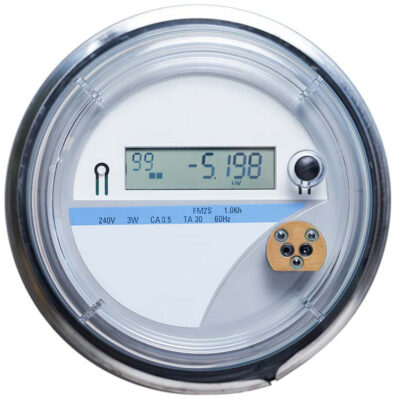
Digital technology revolutionized electricity metering about 15 years ago. Connected meters eliminated manual meter readings, marking the inception of what we know as smart meters. What makes these energy meters smart?
Internet of Things (IoT) smart meter purposes extend beyond billing. These devices are considered smart because they measure multiple parameters in near real time at the point of consumption. Utility providers can optimize energy distribution by balancing supply and demand while empowering consumers to make smarter usage decisions.
Smart metering technology allows utilities to deliver value-added services to their customers. These services include real-time billing data and flexible tariffs based during peak demand periods.
This built-in flexibility helps optimize grid operations and aids consumers in becoming more energy-aware. Smart metering’s resulting cost and energy savings make it an attractive investment for utilities and governments.
eSIMs present meter manufacturers and solution providers with many new opportunities across various parts of the business. Here are a few examples:

The urgency of growing environmental concerns has fueled the rise of smart meters. Electricity can now be generated from multiple distributed renewable energy sources and fed into the wider smart grid. This move seeks to reduce dependency on fossil fuels. Smart meters became pivotal in addressing these concerns.
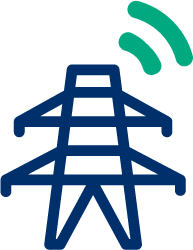
Smart meters are key to building smart grids that efficiently manage energy to accommodate growing demands. They are essential for managing our reliance on fossil fuels and can help utilities use them only when necessary.
With the right connectivity, smart meters integrate seamlessly into advanced metering infrastructure (AMI) and contribute to a broader smart grid. They provide utilities with real-time data on power consumption and quality. Once connected meters collect data, they transmit it to grid managers, who can identify inefficiencies.

Consumers also gain valuable information about energy consumption. With real-time insights on energy usage, individuals can identify which appliances are using the most energy. Then, they can make informed decisions to reduce consumption, emissions and energy bills.
Overall, smart meters are revolutionizing energy management. They create a holistic effect to empower consumers and address critical environmental concerns and grid efficiency.
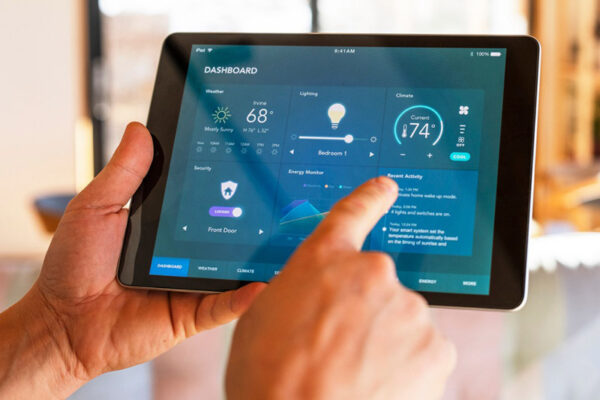
Utility services adhere to three fundamental principles:
Smart metering addresses each of these but takes it to a new level. It revolutionizes utilities by unleashing applications for various uses.
Utilities must adapt to evolving challenges and the technologies available to solve them. They also must consider the shifting demands and expectations of consumers, which include convenience and experiences.
The prosumer-led surge in solar power generation and high demand coupled with electric vehicles’ energy storage capacity introduce grid management variables. Meters accommodate these distributed energy resources with multiple applications available on the meters. Customers can easily use these applications to manage their energy usage.
Another powerful use case is remotely controlling appliances in homes and buildings. Consumers can manage their appliances anywhere and anytime using smartphones or other internet-connected devices. They can reduce consumption and optimize usage to lower their energy bills.
Water conservation is another pressing issue. Smart IoT-based water meters provide real-time data about water consumption practices. Analysis can ensure that providers accurately allocate water during drought conditions.
Utilities can gain valuable insights into energy demand patterns by monitoring and controlling appliance usage to improve efficiency and reduce outages. At the same time, utility companies can empower consumers to make informed decisions.
Smart meters create the unlimited potential to adapt to future needs. They offer solutions that positively affect our electricity, gas and water resources. In addition, they provide many advantages to utility companies and consumers. This shift from traditional metering practices propels the industry toward a more efficient, sustainable future.
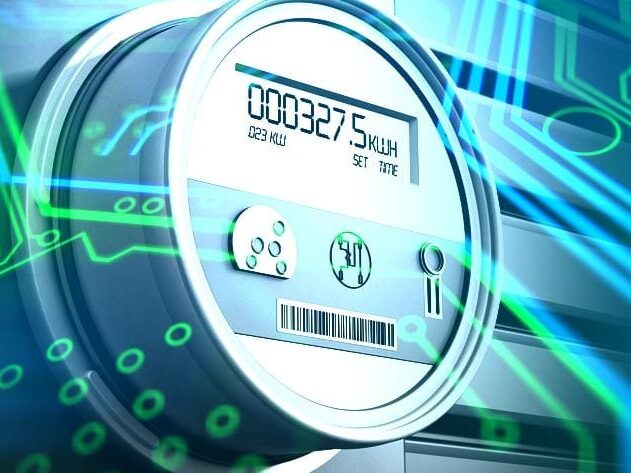
The smart metering market is pushing for innovation. IoT solution providers face the challenge of developing efficient, secure implementations at scale.
Cellular connectivity has emerged as a cornerstone in the evolution of smart metering. It empowers these devices with seamless communication and widespread coverage.
As smart meters become more sophisticated, the focus shifts toward connectivity technologies that prioritize interoperability and standardization. This shift is crucial for realizing connected meters’ full potential and integrating them seamlessly into the energy ecosystem.
Europe has transitioned from earlier power line communication (PLC) technologies to cellular connectivity solutions in major smart meter rollouts. The momentum driving cellular connectivity is its reliability and interoperability, as well as its ease of deployment and scalability.

North America presents a diverse smart metering landscape dominated by proprietary ISM-based mesh networks. Some enterprises are playing a prominent role alongside continued PLC and high bandwidth cellular use for concentrators.
However, the adoption of cellular connectivity technology is trending with the rise of private networks. Many North American meter manufacturers are exploring hybrid solutions that combine cellular technology and mesh networks. These hybrids often leverage the Wi-SUN standard at the 900 MHz frequency band.
The allure of the 900 MHz band lies in its absence of duty cycle limitations. It enables robust communication with higher transmission power compared to Europe.
Hybrid networks are anticipated to be pivotal in future deployments as the smart metering landscape evolves. These networks will harness cellular connectivity’s strengths, potentially incorporating non-terrestrial networks (NTNs) with mesh technologies. This combination can enhance reliable communication in connected metering systems.
As the industry strives for standardization and interoperability, stakeholders’ collaborations will shape a secure future for smart meters.
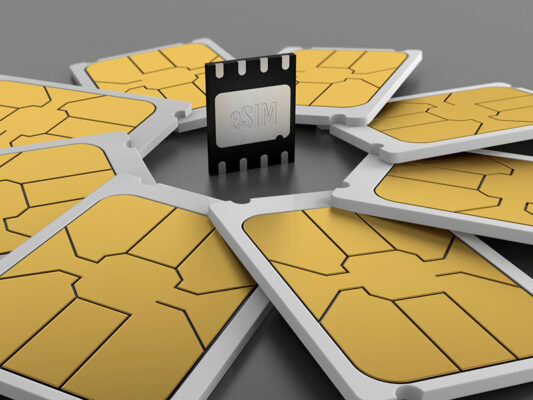
The introduction of embedded SIM (eSIM) technology is revolutionizing the smart metering market. eSIMs store authentication data, which makes cellular connectivity possible.
A traditional Subscriber Identity Module (SIM) is a compact integrated circuit chip. It can be manually inserted and removed from devices. Its primary function is to store and transmit a mobile subscriber’s identity. SIMs are crucial for authenticating the subscriber and facilitating communication with the cellular network.
eSIMs are embedded directly into the device’s hardware. They offer multiple advantages over traditional plug-in SIM cards. eSIMs are more secure and tamper-proof, making them less likely to be lost or stolen. In addition, they are flexible and robust enough to withstand environmental conditions, such as vibration and temperature.
eSIMs are a secure solution. They are also flexible and scalable for smart metering, offering a variety of uses. Expect to see eSIM technology used in various devices with more applications available to operators and users.
eSIMs present meter manufacturers and solution providers with many new opportunities across various parts of the business. Here are a few examples:
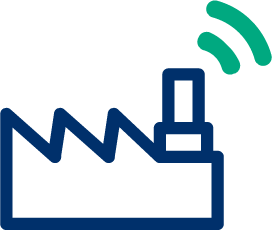
eSIMs have an immediate impact on manufacturing. They eliminate the need for physical SIM card insertion and activation during manufacturing. This streamlines the production line and reduces labor costs associated with manual SIM card handling and installation.
Moreover, eSIM preprovisioning allows manufacturers to evaluate and validate device connectivity before the smart meters leave the factory. Manufacturers can ensure they are ready for deployment upon delivery.

Managing the physical inventory of SIM cards can be a logistical challenge for meter manufacturers. They may have to deal with multiple profiles for network operators and customer requirements.
eSIMs eliminate the need for physical SIM card inventory management, as profiles can be provisioned and updated remotely. As a result, the management process is simplified, and the risks of stockouts and overstocking are reduced.

Smart meters have an operational lifespan of 10 to 15 years. Factors like operator mergers or urban developments can impact cell tower coverage. These can also cause disruptions or failure to meet service-level agreements (SLAs).
eSIM technology empowers utilities to switch to alternative cellular operators seamlessly without physically replacing SIM cards. Subscriptions are managed remotely, ensuring uninterrupted connectivity and business continuity.
Overall, eSIMs offer myriad advantages for solution providers in smart meter deployment. Some include streamlined processes, cost savings and enhanced supply chain efficiency.
IoT smart meters require the right connections to integrate devices and systems seamlessly. Choosing the right connectivity module is critical. Variables like security and power usage are essential considerations. In its various generations, cellular IoT connectivity has emerged as a popular choice across all metering types.
Security is a critical function of smart metering. Cellular IoT connectivity offers a significant advantage in terms of security by providing a tamper-proof communications channel.
Unlike other connectivity options, cellular networks have multiple layers of protection against unauthorized access and data interception. This closed system security is crucial for smart meters, which manage sensitive data and are vulnerable to physical tampering.
Cellular networks can also handle large-scale deployments, making them ideal for smart metering applications. The network infrastructure can accommodate a vast number of connected devices. Each meter can securely communicate and exchange data without compromising network performance or overall security.
By leveraging cellular IoT connectivity, utilities can safeguard sensitive energy data and protect against cyber threats. In addition, they can ensure the integrity of their smart metering networks.
Telit Cinterion has worked with companies for over 20 years, delivering secure end-to-end, award-winning IoT solutions. We enable thousands of successful IoT solutions worldwide. Moreover, we continue to invest in our technology roadmap to guide the industry into the future.
Discover how to enable new services with IoT smart meters and cellular connectivity for seamless integration and security. Speak with our IoT experts to start building your IoT solutions for smart meters.